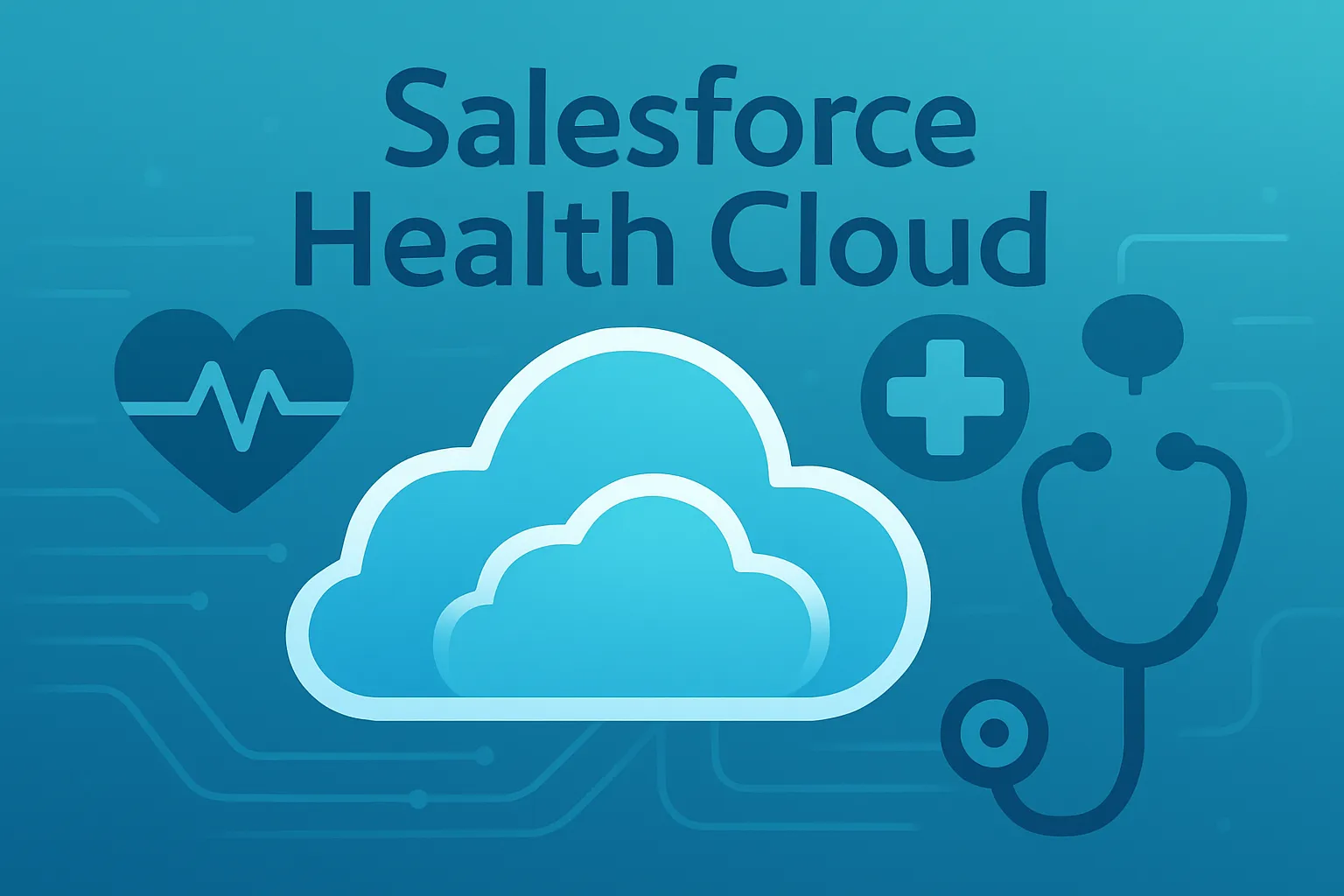
When working with Salesforce Health Cloud, understanding the data model is the foundation for building any healthcare solution. A data model defines how all the important pieces of information—patients, families, providers, payers, and services—are organized and connected inside Salesforce. It’s what allows you to link a patient to their household, insurance plan, medical visits, and even service providers like transportation companies. This structure not only helps you store data but also makes it easy to customize processes, enforce privacy rules, and create meaningful insights for care teams. In this blog, we’ll explore how Health Cloud uses Person Accounts, households, and relationships to represent real-life scenarios, why these connections matter, and how specialized objects like Clinic Encounters and Diagnoses make healthcare data complete and actionable.
What Is a Data Model And Why Does It Matter in Health Cloud?
- A data model shows how information (like patient, doctor, family, insurance, hospital) is organized and connected in the Salesforce Health Cloud.
- Understanding the data model helps you build, customize, and solve business problems in Health Cloud.
Key Points: How People, Accounts, & Relationships Work
1. Person Account
- Most patients in Health Cloud are set up as Person Accounts (not regular business accounts).
- A Person Account is actually a mix of both an Account and a Contact record—so it stores all the info for an individual patient.
- Example: Charles Green is a patient, so he is a Person Account in Salesforce.
2. Household
- A patient’s household—like a family or home—is tracked as an Account too.
- Charles Green’s household ("Green Household") is an Account, and his wife Shawna Green is also a Person Account.
3. Relationships
- Person Accounts can be related to the household Account and to each other (Charles and Shawna are connected as husband/wife).
- Salesforce can show “contact-to-contact” relationships (marriage, dependents, caregiving, etc.).
Scenario Example: Linking Together All the Pieces
- Charles Green is a patient (Person Account), married to Shawna Green (Person Account).
- Both are part of the Green Household (Account).
- They are linked:
- Charles and Shawna are connected as family.
- Charles is connected to the Green Household.
- Same for Shawna.
- Adding Insurance and Services
4. Medical Insurance (Payer)
- Charles has medical insurance from “Blooming Health Plan” (Account, type: Payer).
- His insurance company is linked to him as his payee.
- Charles' cover includes transportation for medical appointments.
5. Transportation Company
- There’s a transportation company (Account) that provides rides.
- This company is linked to the insurance (for service agreement) and also to Charles Green (as the person getting a ride).
6. Arranger/Helper
- Anna arranges or helps with Charles’s transportation.
- Anna is connected to Charles (contact-to-contact relationship) and to the transportation company.
7. How Sharing and Visibility Work
- Each of these relationships can have sharing rules (who can see and edit which data) for privacy and practical use.
- All connections (between people, families, services, and insurance) make building Health Cloud solutions possible—everything is mapped!
The Health Cloud "Objects" (Special Salesforce Data Types)
- Most of what is described above uses regular Salesforce objects (Accounts and Contacts).
- BUT for medical events and services, Health Cloud adds extra specialty objects, such as:
8. Clinic Encounter
- When Charles visits a clinic or hospital, a Clinic Encounter record is created.
- This links Charles to the facility, provider (doctor), and the reason for the visit (like “kidney stone”).
9. Reason for Visit & Diagnosis
- Each encounter has:
- The provider (doctor: Dr. Peterson)
- The reason (back pain from kidney stone)
- Medical diagnosis and request for tests or services
10. Connecting Data
- All encounter details (hospital, doctor, visit reason, diagnosis, and linked insurance) are stored and related in the Health Cloud data model.
- This helps clinics and care teams track history and coordinate care efficiently.
Why Is This Data Model Powerful?
- You can see everything about a patient in one place: Family, insurance, medical visits, relationships, and more.
- Easy for sharing and privacy: Rules let you decide who can see what (for staff, specialists, insurance, or helpers).
- Automation and reporting: Data model structure makes it easy to build automation (reminders, approvals) and track health history.
- Flexible for adding new data: As a patient adds a new insurance, gets a new helper, or has another medical event, you simply add more records and link them.
Summary
If you want to learn even more, check out Salesforce’s schema builder in your org—open Person Account, Clinic Encounter, and related objects to see their connections. Good data modeling in Health Cloud means better care for patients, easier management for providers, and less stress for everyone using the system.
Health Cloud’s data model uses Person Accounts for patients, Account relationships for families and services, and links everything through custom objects (like Clinic Encounter) to track every piece of a patient’s healthcare journey. It’s all about organized, connected, and secure data!